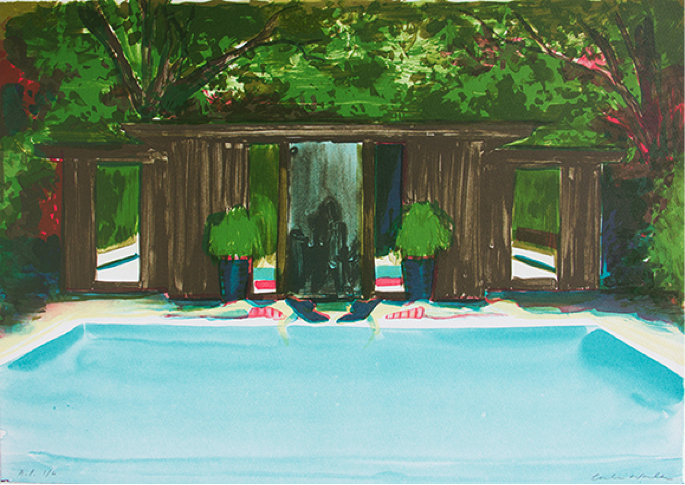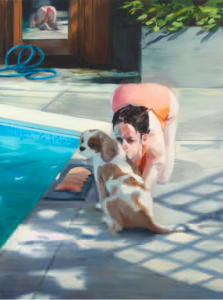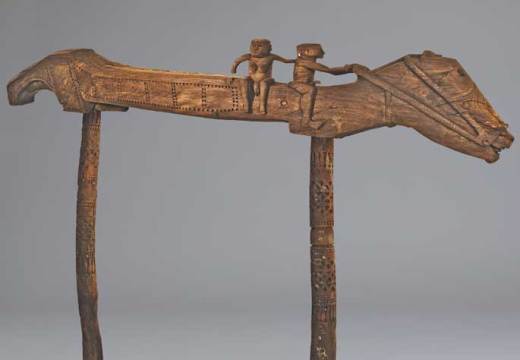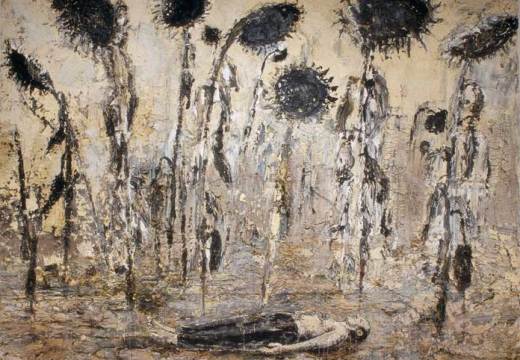A new exhibition of lithographs and works on paper by Scottish artist Caroline Walker opened last week at Enitharmon Editions in Bloomsbury. Walker has called the portfolio of four lithographs ‘Initiations’, partly because they are her first encounters with a new process for creating images.
‘I’ve always painted in a fast, instinctive way, considering colour relationships as I go and altering them as necessary’, she explains. In lithography, where the colours have to be built up methodically layer by layer, this can’t be done so freely. Even if the print is made with a dozen different layers, it still entails a simplification of the colour range available in an oil painting and a refinement of intricate details into simpler forms. In her own words, Walker has had ‘to reconsider how I construct an image and explore the relationship between the intensity and variety of mark making and its outcomes in print, entirely different to working with oil paint’.
On the evidence of these four prints, Walker is already adept in the medium. The process may be new for her, but in other ways Walker’s lithographs have much in common with her paintings, which arise from a well-honed and elaborate process for creating images. A typical Walker painting will show a carefully chosen location, most often elegant luxury homes with clean-edged, neo-modernist design, where one or more women – played by models and actors auditioned and dressed by the artist – are caught in moments of enigmatic significance, at once inconsequential and charged with possible implication.
In the lithograph Island Resort, for instance, two women sunbathe in matching candy-stripe swimming costumes and over-size hats, symmetrically dangling their arms in the pool (a scene witnessed from another angle in a 2013 painting, Recreation Pavilion, where the swimming costumes were pale orange). In ‘Local Custom’ we are in a room decorated with a huge wall-painting of nude pipers and Matisse-like dancers, where one woman stands behind another and reaches around to cover her eyes, while the woman in front instinctively raises her hands, either in fondness or defence…
The viewer is likely to feel intrusive, gazing on these moments of private exchange or quiet, self-absorbed being. They look like photographs or film stills, ardently worked through a pictorial intelligence which takes painterly facture as the means for an investigation into the politics of the image. It is impossible not to be aware of how gendered one’s response is.
As the name ‘Initiations’ suggests, the works in the Enitharmon exhibition are modest and small-scale, but in her major oil paintings Walker is working at a growing pitch of ambition and accomplishment. The 2012 painting Role Reversal, which alludes to Eric Fischl’s 1984 painting Imitating the Dog, is a good example of how Walker’s paintings work upon the viewer. It was included in her 2013 solo show at Pitzhanger Manor, ‘In Every Dream Home’, and in the monograph of the same name.
A woman is down on all fours by the edge of a swimming pool, eye-level with a King Charles spaniel. The dog isn’t joining in with her; it looks away over its shoulder at something in the picture’s blind spot. When humans and animals co-habit pictorial space, the ontology of the image is fractured, since the animal can have no idea that an image is being created. It’s as if two separate planes of being are in the painting at once, one of them intensely reflexive and self-conscious about looking and being pictured, the other neutral, insistent in its gaze, and incapable of shame. The proliferation of flat planes and geometrical angles – the surface of the water, the paving tiles, the mirrored pool-house door, the lattice of the trellis shadow – gives us pause to reflect upon our own looking, and how the subjects seem trapped in being constructed within the image.
The pale orange of her swimming costume rhymes with the flesh of the melon slices laid out on a tray, suggesting an ironic relationship between them: the one, a thin outside-membrane that encloses and conceals a body, the other a vulnerable, exposed interior. The melon tray invokes the off-stage memory of the round fruit from which these cleft slices have been taken, and thereby, at once subtly and winkingly, seems to refer us to the woman’s upturned backside.
We have seen this posture in other Caroline Walker paintings, notably in Vantage Point (2010), where it is a woman’s way of getting down to scrub the floor. If we read across from one picture to the other, household work echoes with the emotional work of playing with an animal. Perhaps this woman is a dog-sitter in a rich person’s house, and bonding with the dog is literally a form of affective labour.
The eye comes late to the reflection in the top left, which gives a voyeuristic translation of the woman’s posture, now inescapably suggesting a sex position (‘Imitating the Dog’). The reflection draws the viewer into a complicit relationship with the gendered forms of power present whenever a human body is gazed upon, but also makes an amused painterly joke about illusion and perception.
This combination of daring and lightness of touch is the mark of an artist who thinks deeply about the history and possibilities of painting – and it is exciting that she is now doing the same with printmaking.
‘Caroline Walker: Initiations’ is at Enitharmon Editions until 12 September.
Unlimited access from just $16 every 3 months
Subscribe to get unlimited and exclusive access to the top art stories, interviews and exhibition reviews.















![Masterpiece [Re]discovery 2022. Photo: Ben Fisher Photography, courtesy of Masterpiece London](http://www.apollo-magazine.com/wp-content/uploads/2022/07/MPL2022_4263.jpg)
It’s time for the government of London to return to its rightful home